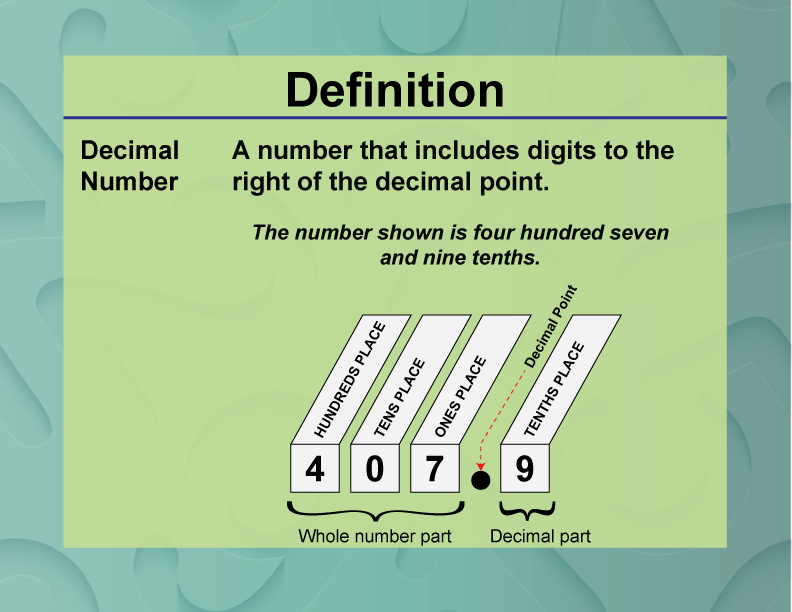
Display Title
Definition--Place Value Concepts--Decimal Number
Display Title
Decimal Number

Topic
Place Value
Definition
A decimal number is a number that includes a decimal point, separating the whole number part from the fractional part.
Description
Decimal numbers are a crucial part of the base ten number system, representing values that are not whole numbers. The decimal point separates the whole number part from the fractional part, allowing for precise representation of values. For example, the number 12.34 has a whole number part (12) and a fractional part (0.34).
In real-world applications, decimal numbers are used in various fields such as finance, science, and engineering. For instance, when measuring length, weight, or volume, decimal numbers provide a precise representation of values, such as 3.75 meters or 2.5 kilograms.
In algebra, decimal numbers are used to represent and solve equations involving fractions and mixed numbers. For example, the equation
x + 2.5 = 5.75
involves decimal numbers and requires understanding their properties to find the solution.
Teaching decimal numbers is relevant to math education because it helps students understand the concept of fractions and their representation in the base ten system. It also prepares them for more advanced mathematical topics involving decimals and fractions.
Teacher's Script: "Let's look at the number 4.56. The digit 4 is in the units place, and the digits 5 and 6 are in the tenths and hundredths places, respectively. This means 4.56 is 4 units and 56 hundredths."
For a complete collection of terms related to Place Value click on this link: Place Value Collection
| Common Core Standards | CCSS.MATH.CONTENT.1.NBT.B.2, CCSS.MATH.CONTENT.1.NBT.C.4, CCSS.MATH.CONTENT.2.NBT.A.1, CCSS.MATH.CONTENT.3.NBT.A.1, CCSS.MATH.CONTENT.4.NBT.A.1, CCSS.MATH.CONTENT.5.NBT.A.4 |
|---|---|
| Grade Range | 1 - 4 |
| Curriculum Nodes |
Arithmetic • Numbers and Patterns • Place Value |
| Copyright Year | 2021 |
| Keywords | place value |